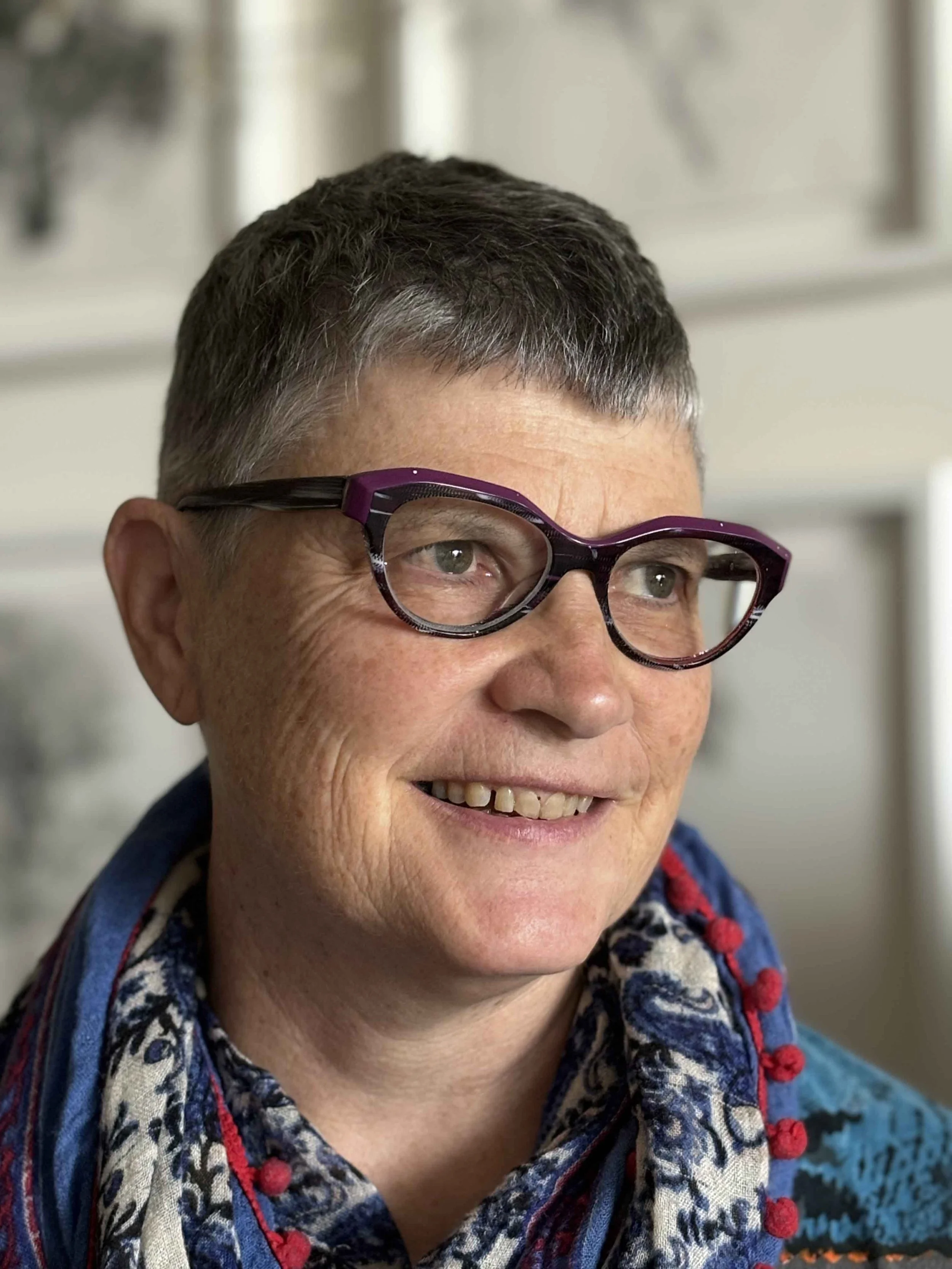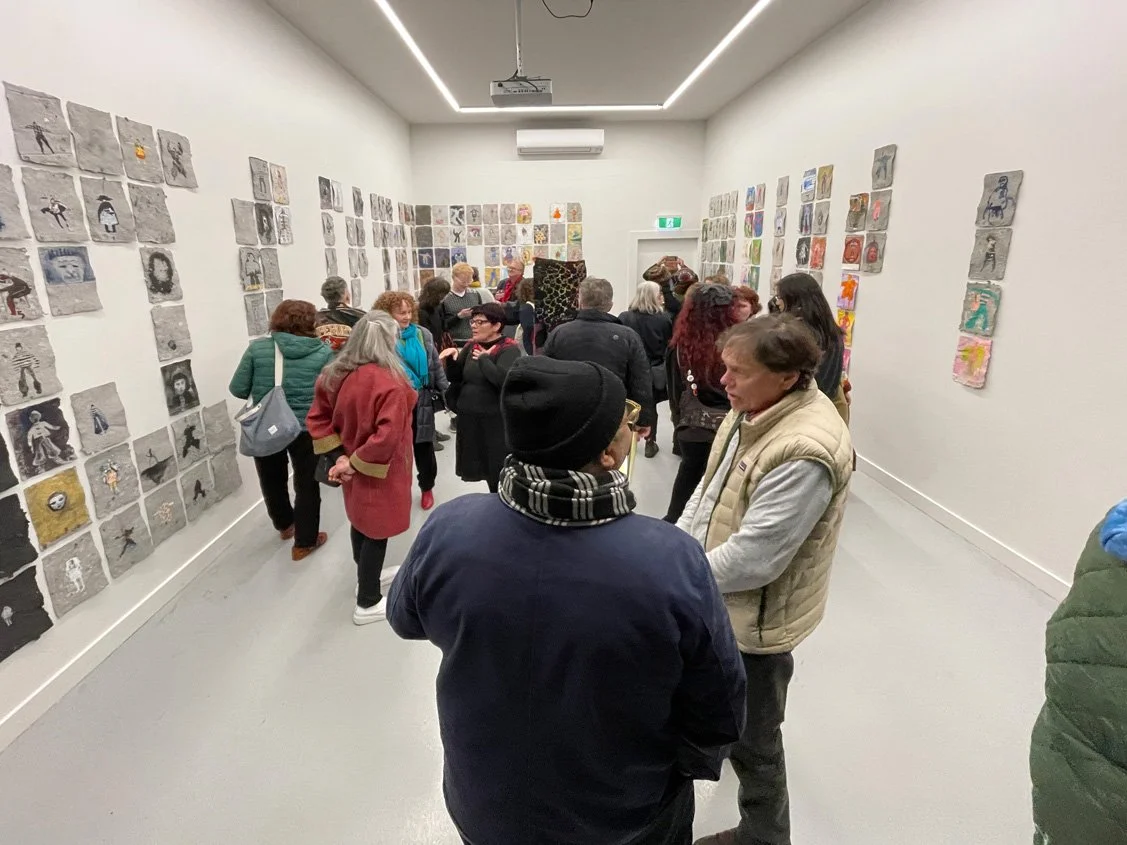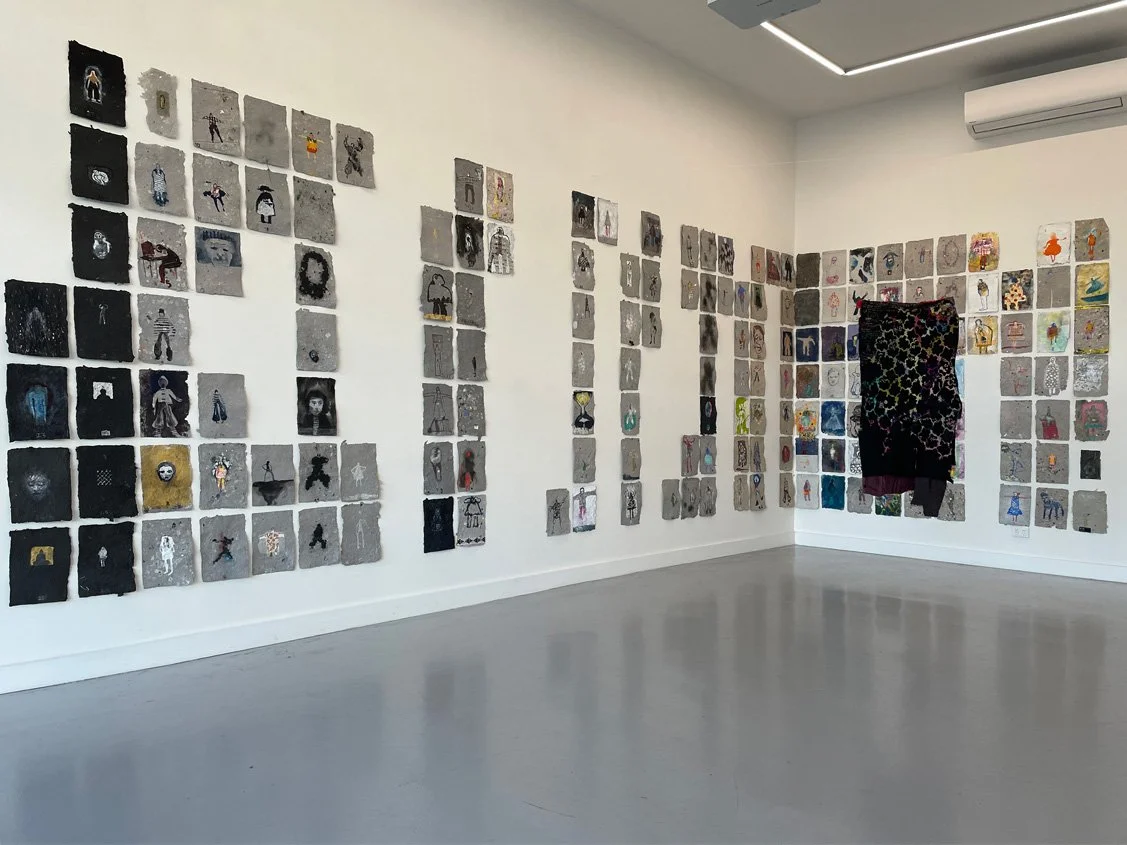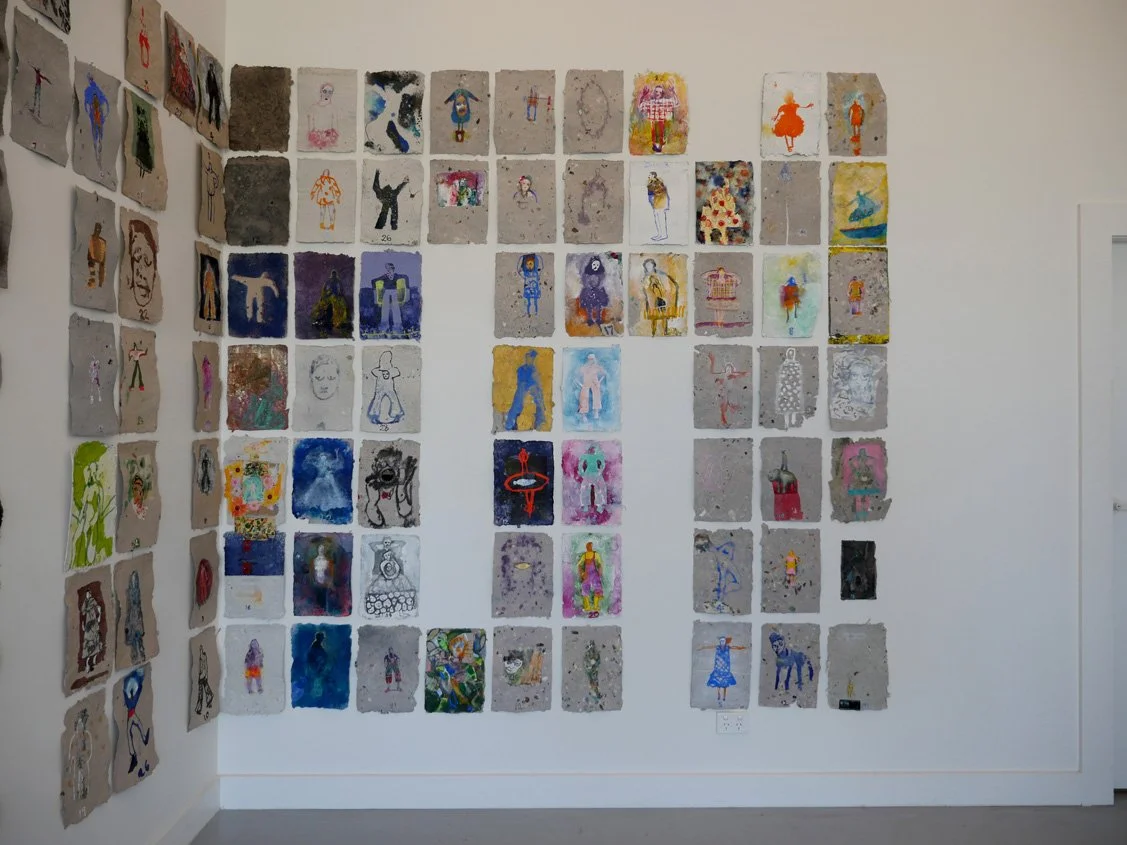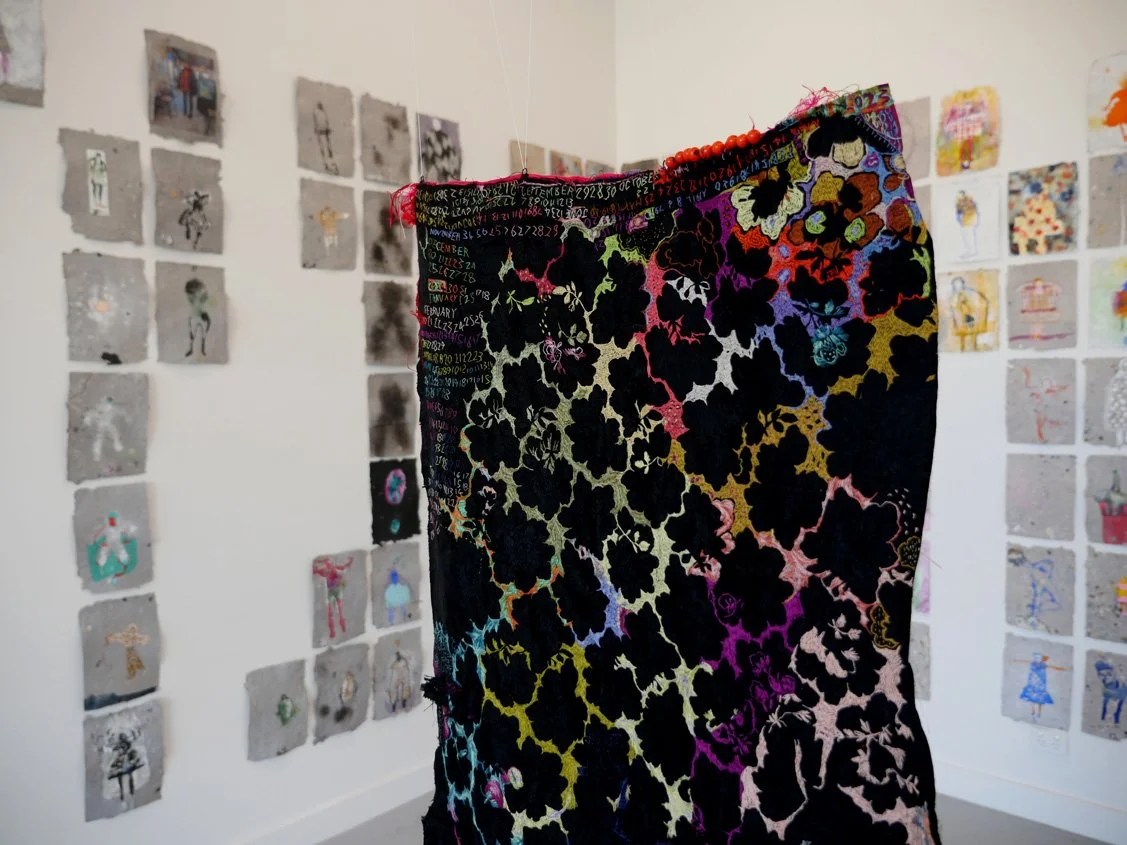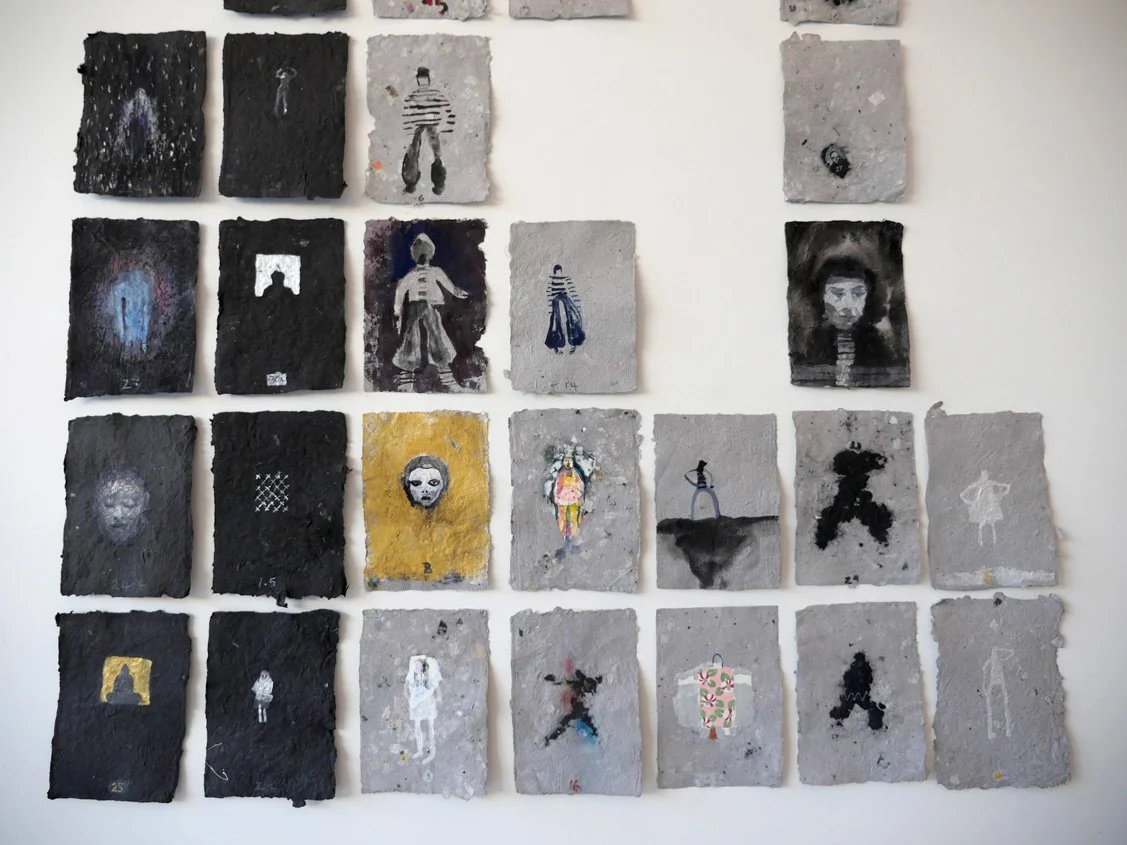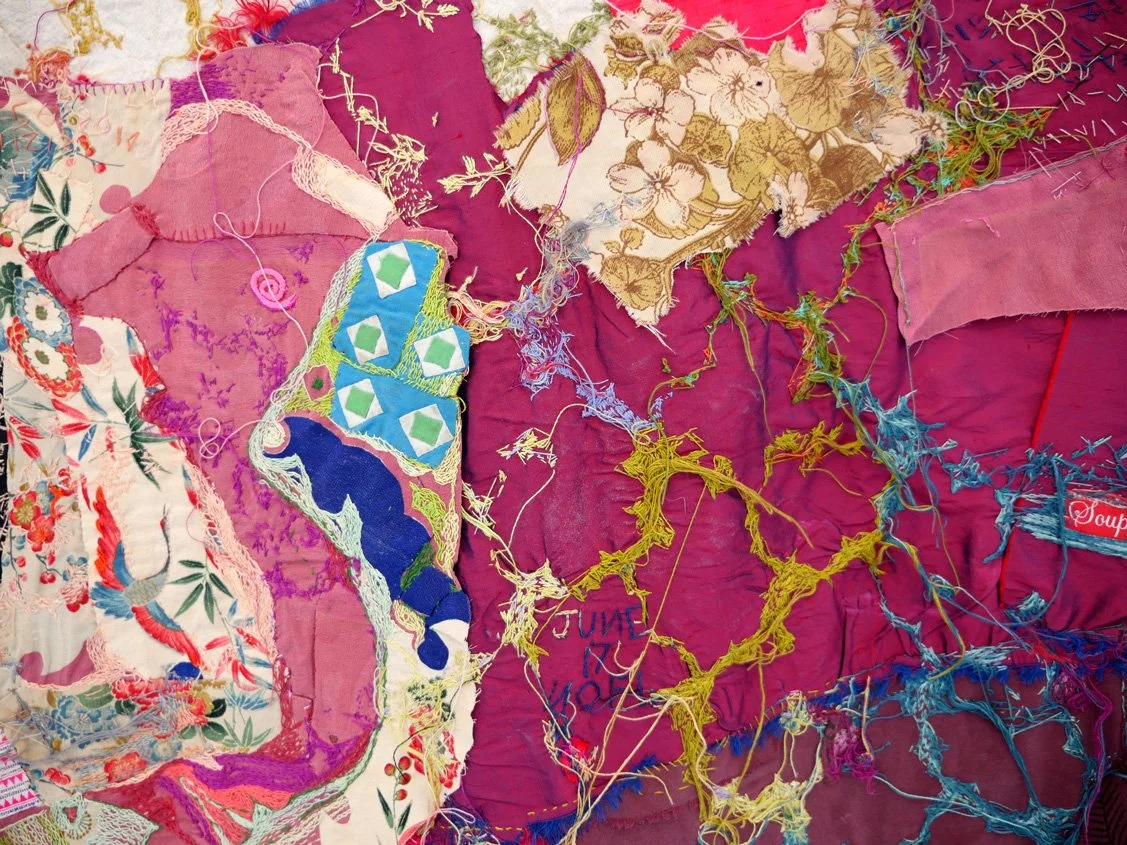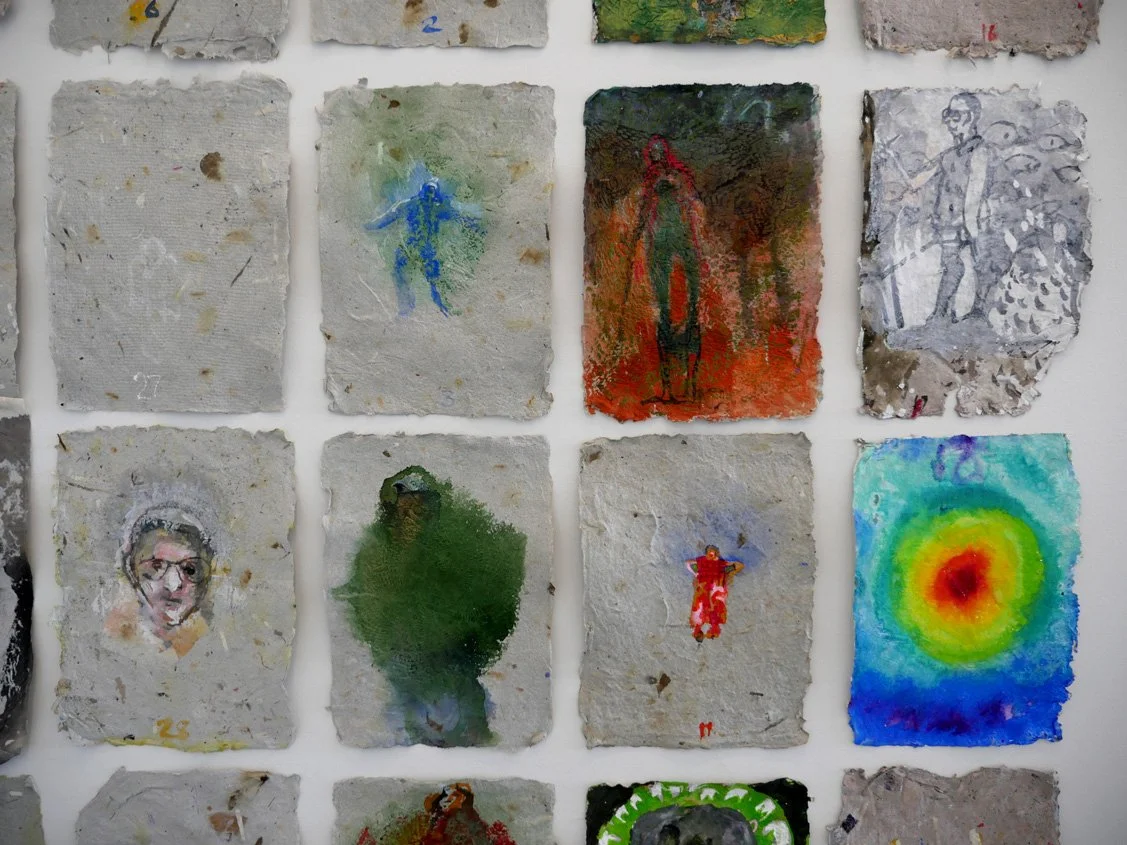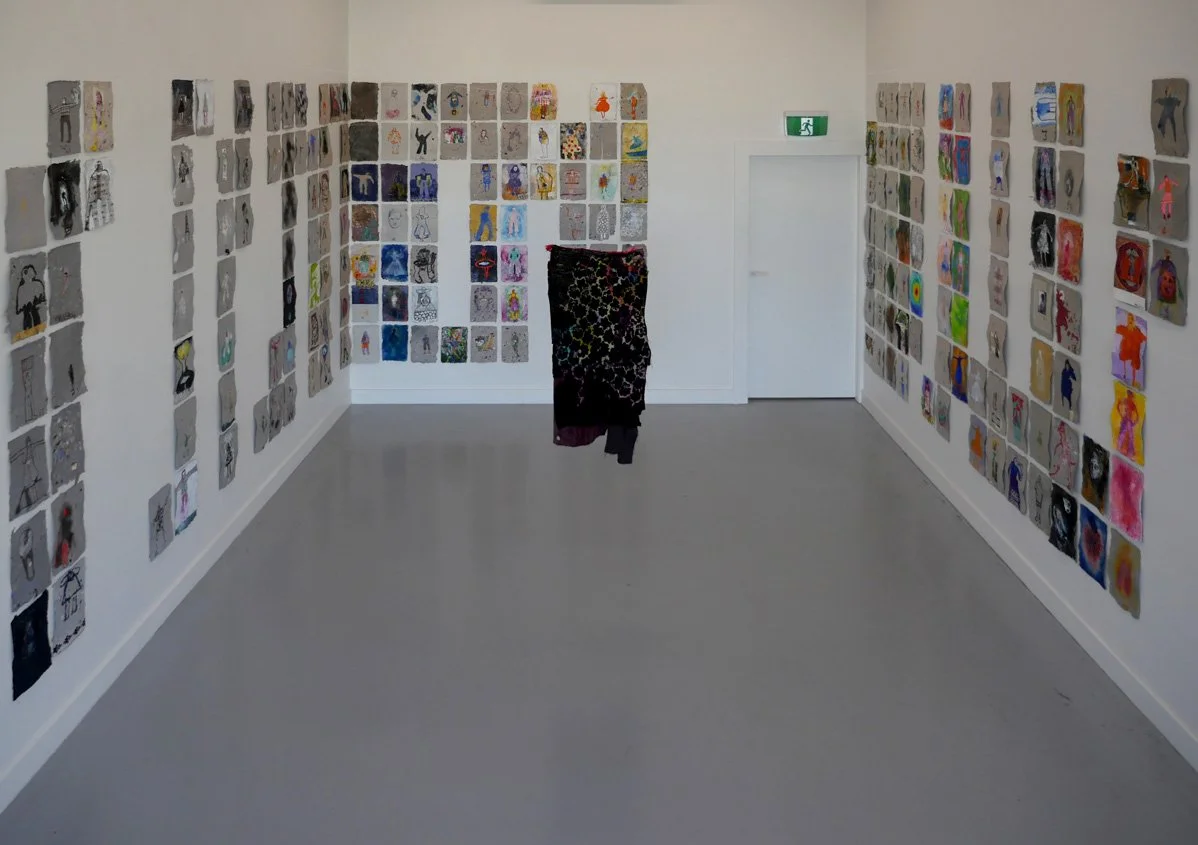Maryanne Coutts / DAYS
6pm Thursday 1 August to 5pm Saturday 24 August
Curated by Gary Warner, Chelsea Lehmann and Melinda Hunt
For DRAW Space in August 2024, Maryanne Coutts will present ‘Days’, a new body of work in drawing on handmade paper and embroidery made as part of her daily practice. ‘Days’ reflects the events of her life as she moves between Sydney, where she lives and works, and Melbourne, where many family members live.
“As I set myself systems to work in, I find that the unpredictability of what might come next in life leads the work into places I hadn’t anticipated, setting challenges and demanding invention to keep the work rolling. In Melbourne, I work each day on an old piece of brocade that is disintegrating as I work; the race to repair is competing with decay and producing something that I didn’t know was coming… and I still don’t know where it’s going.”
Maryanne Coutts, June 2024
Maryanne Coutts is an artist who draws every day and is the Head of Drawing at the National Art School. She sustains various concurrent long-form, open-ended drawing projects through which she seeks to hold and represent, in handmade images, personal expression, and encounters in our ever-changing world. Her projects involve trees, clothing, bodies, news media, and urban environments.
Acknowledgement: Maryanne Coutts wishes to recognise the fluid relationship with artist Oliver Watson’s collaborative process that is woven into the project.
Maryanne Coutts is represented by Australian Galleries in Sydney and Melbourne.
To see more of Maryanne’s work, visit her blog
documentation photos: Gary Warner
Exhibition Essay by Fiona Henderson
Maryanne Coutts has been engaged in a daily drawing practice, Dress (C)ode, since 2013. Every day she starts a drawing and the first point of reference for the drawing is what she wears that day. This exhibition includes drawings from February 2023, when the current iteration of Dress (C)ode started, until the present. It is possible to think of all the drawings in this exhibition as one work. Each day, when Maryanne is in Sydney, she works in her studio and starts a drawing on a piece of handmade paper. When she is not in Sydney, she works on the transportable form of the black silk brocade she embroiders. Consequently, for any date where there is not a corresponding drawing, there will be an addition to the embroidered work. When considered as a body, the drawings show us an aspect of the nature of time: its apparently linear progression tempered by the ways memory pulls us into the past and by how the future affects the present. Memory is deeply embedded in the whole of Dress (C)ode but particularly in this iteration where, in addition to each drawing being a memory of a day, the materials on which Maryanne has drawn carry strong memories of their past lives. On yet another level Dress (C)ode shows us the nature of life itself.
To grasp the depth of the works being shown at DRAW Space one must first appreciate the nature of the materials used as their base. The paper that Maryanne has drawn on is handmade by her from her old drawings; ripped or shredded, pulped and then pressed into new pieces of paper. Textures and colours carry over from the drawings selected for each batch. Some of this paper is included in the exhibition without drawings and it is easy to see that intrusions manifest when pieces survive the pulping process and appear on the surface of the paper. Time and memory are embedded in each piece of paper. The passage of time becomes apparent when the works are laid out in sequence and you can see progression in Maryanne’s technique in making the paper.
In the first batch the thickness went from almost cardboard-like to tissue thin and then, as her skill increased, she managed to make the thickness increasingly regular. Time based variations also result from factors like the impressions left by the different fabrics Maryanne lays between the sheets as she makes them or the elements of collage or paper pulp she adds into the paper. The colour of the paper also charts the progression of time; the batch when Maryanne tore up dark drawings, the phase when she decided to add blue ink to the mix. When the drawings are placed in a stack they become like geological strata. The stack shows the entirety of the time that has passed and strata of texture and colour become very apparent. Memory is carried in the colour, texture and intrusions in the paper; memory of the material it once was, memory of the drawing it once carried, memory of life at the time it was created, memory of the time it has been stored.
There is always a strong relationship between objects and memory. We all have things that remind us of other people, places, times and experiences. Fabric has a particular capacity to carry memories. In the case of clothes, it can carry not only associations but also the signs of the wearer in its creases, pulls, worn elbows and ragged cuffs. Fabric also carries smell which adds another, strongly evocative dimension of memory.1 The piece of black silk brocade that Maryanne continues to work on while she is out of Sydney, on regular visits to her family at a time of prolonged family grief, was old when she bought it, possibly older than Maryanne. It had been stored for a long time and in that time it had become fragile, no longer strong enough to become a piece of clothing. Its fold lines, holes and tears bear witness to its age and its long storage before being used. The back is reinforced with fragments of materials, including a piece of her mother’s Christmas pudding cloth. Each fragment brings its own associations as well as all of them representing Maryanne’s long relationship with and interest in fabric.
When in Sydney, Maryanne starts a drawing each day, often walking into her studio first thing in the morning before she does anything else and the starting thought for each drawing is her clothes for that day. Each drawing is like a bead on the string of linear time. There are beads sewn onto the embroidered piece, making the allusion material. Time is not only linear, it is also porous; the present, past and future all seep into one another. Each drawing is dated the day it was started, and consequently represents, in linear time. Maryanne has drawings laid out across the bench of her studio as they dry, continuing to be visible for several days. Thus, the new drawing of the day is influenced by what has gone before in the memories of the piece of paper used that day as well as the drawings lying on the table with their ideas and memories waiting to be picked up and carried over into a new work.
In the same way the embroidered piece has both linear and porous time on its surface. The dates of Maryanne’s visits to Melbourne are embroidered along the sides. Each visit is represented by a particular colour of thread that related to Maryanne’s feelings at that time. But the work is neither linear nor one dimensional. As with the strata of paper, over time the system changes, evolving as Maryanne spends time with the work. There is a very colourful area worked in greens and pinks that was done over Christmas 2023 and the beads came from a necklace that was broken on a visit to Melbourne. Each bead was sewn on to represent a visit to Melbourne until intuition told Maryanne that there were enough beads and the system folded in the face of feeling. There is a counterpoint between the front and back of the embroidered piece. The time Maryanne spent in Vietnam in January 2024 is encapsulated in the fabric map on the rear of the brocade. Working on both the front and back affected her choices of colour and pattern when she embroidered the black fabric in front of the map so that one responds to the other.
On the front Maryanne has worked within the existing pattern while also trying to repair tears and, perhaps, to find a new perfection. On the back the work is messier, without the structure of the pre-existing pattern. Thus, do we all move through life, trying to find and impose order as we live within linear time, but also subject to the messiness of a chaotic universe we can’t possibly control.
When Maryanne started Dress (C)ode in 2013, she put systems in place to guide her daily practice. The most fundamental and unchanging system being that it should be done every day. As the years have passed there have been different iterations of systems that guided blocks of time, usually a series of months. The present iteration started in 2023 when Maryanne started making her own paper. Rules evolved, but they are always subject to events and to intuition. There are rules like Maryanne only using her paper in her studio. When she travels to Melbourne she embroiders on her fabric. Whatever the rules, Maryanne does not know when or how this iteration of Dress (C)ode will finish. While individual drawings on paper are finished, more will be added to the collection and the embroidery remains a work in progress. She does not know what it will look like when it does finish, it progresses within the rules, affected by the vicissitudes of daily life, changing, growing and evolving. As such it is life made material, an experience to which we can all relate.
[1] Peter Stallybrass, "Worn Worlds: Clothes, Mourning and the Life of Things," in The Textile Reader (Bloomsbury Visual Arts, 2019), 68 -77.
© 2024 Fiona Henderson
Fiona Henderson is a long-term student of Maryanne's and was honoured to be asked to write this essay. She is also an artist with an interest in material culture, textiles and drawing in all its forms.

